In recent years, the air fryer market has seen a surge in popularity, with consumers increasingly gravitating towards healthier cooking methods. As the industry continues to evolve, the role of CE certified air fryer OEMs becomes ever more pivotal. This article delves into the intricacies of the regulatory landscape, highlighting the benefits of choosing CE certified air fryer OEMs, and examines the market trends and consumer preferences shaping the industry. It also explores the impact of technology on air fryer OEMs, showcases successful case studies, and provides insights into the future outlook for CE certified air fryer OEMs.
The Rise of Air Fryers in the Western Market
The air fryer has quietly transformed the culinary landscape in the Western market, becoming a staple in kitchens across Europe and North America. Once a niche product, this innovative cooking appliance has surged in popularity, largely due to its health benefits and convenience. Let’s delve into the factors that have contributed to the rise of air fryers in the Western market.
Health-conscious consumers have been at the forefront of this trend. With the increasing awareness of the negative health impacts of deep-frying, air fryers offer a healthier alternative that still delivers crispy, golden results. The technology behind air fryers involves circulating hot air around the food, which reduces the amount of oil needed by up to 80% compared to traditional frying methods. This has made air fryers a favorite among those looking to enjoy their favorite fried foods without the guilt.
The simplicity of use is another key factor in the air fryer’s popularity. These appliances are designed to be intuitive, with easy-to-read controls and pre-programmed settings for a variety of foods. Users can simply place their ingredients inside, set the timer, and let the air fryer do the work. This hands-off approach is particularly appealing to busy individuals and families who value their time.
The versatility of air fryers has also played a significant role in their rise. They can cook a wide range of foods, from vegetables and meats to desserts and even bread. This versatility means that air fryers can replace multiple kitchen appliances, such as deep fryers, ovens, and even skillets, making them a space-saving and cost-effective addition to any kitchen.
In recent years, the Western market has seen a surge in the availability of air fryers, with major retailers and online platforms offering a vast array of options. This has made it easier for consumers to find and purchase air fryers, further fueling their popularity. Additionally, the rise of social media and influencer marketing has helped to spread the word about the benefits of air fryers, with many food bloggers and chefs showcasing their favorite recipes and cooking techniques.
The environmental impact of cooking methods has also become a growing concern. Air fryers are seen as a more sustainable option due to their lower energy consumption and the reduction in oil waste. This eco-friendly aspect resonates with consumers who are increasingly conscious of their carbon footprint and the environmental impact of their lifestyle choices.
Manufacturers have responded to the demand by introducing a wide range of air fryer models, each with unique features and capabilities. From countertop models to larger, family-sized appliances, there’s an air fryer to suit every kitchen and budget. Some models even come with additional accessories, such as air fryer baskets and rotisseries, to enhance the cooking experience.
As the market has matured, innovation has continued to drive the air fryer’s popularity. Smart air fryers equipped with Wi-Fi connectivity and mobile app integration have become more common, allowing users to monitor and control their cooking remotely. This technological advancement has made air fryers not just a cooking tool but also a smart kitchen appliance.
The rise of air fryers in the Western market is also a testament to the power of innovation and marketing. Companies have leveraged the latest cooking trends and consumer preferences to create products that not only meet but exceed expectations. The result is a market that is dynamic and constantly evolving, with new features and functionalities being introduced regularly.
In conclusion, the air fryer’s rise in the Western market is a multifaceted phenomenon driven by health consciousness, convenience, versatility, and environmental concerns. As the market continues to grow, it’s clear that the air fryer is here to stay, becoming an indispensable tool in the modern kitchen.
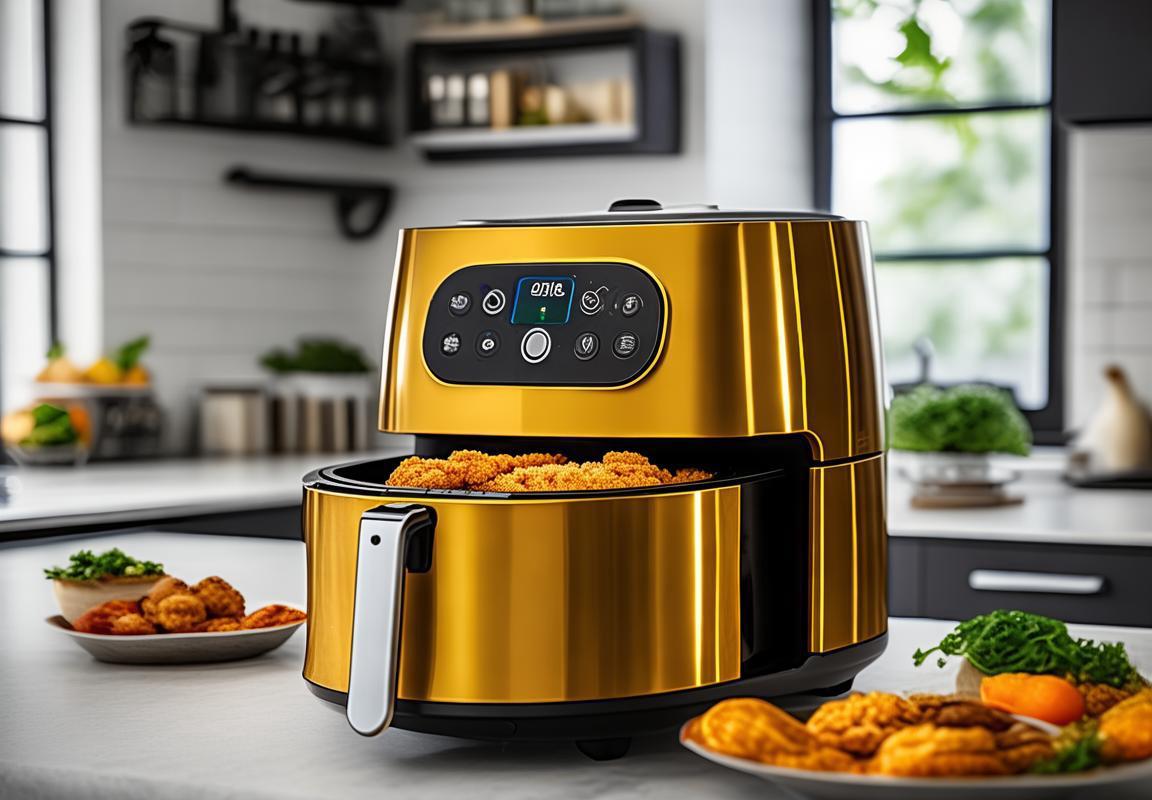
Understanding CE Certification
In the intricate tapestry of international trade and product compliance, CE certification stands as a beacon of quality and safety. This European Union mark, often seen on a wide array of products, signifies that a product meets the essential health, safety, and environmental protection requirements set forth by the EU. Let’s delve into the nuances of CE certification and its significance.
The CE mark, which stands for “Conformité Européenne,” translates to “European Conformity.” It is not a certification per se, but rather a declaration by the manufacturer that the product complies with all relevant EU directives. This declaration is typically affixed to the product or its packaging, serving as a visual assurance to consumers and regulatory authorities that the product is safe and meets the necessary standards.
One of the key aspects of CE certification is its modular nature. Different products fall under various directives, each addressing specific requirements. For instance, the Low Voltage Directive (LVD) governs electrical equipment designed for use in voltages up to 1000 volts, while the Radio Equipment Directive (RED) covers devices that emit radio signals. Understanding which directive applies to a particular product is crucial for the certification process.
The certification process itself can be complex. Manufacturers must ensure that their products meet the essential requirements of the applicable directives. This often involves technical documentation, such as design drawings, test reports, and user manuals. In some cases, independent testing by a notified body is required to verify compliance. The notified body is an organization recognized by the EU to carry out these tests and provide certification.
One of the most notable aspects of CE certification is its flexibility. Manufacturers can choose to self-certify their products or have them certified by a notified body. Self-certification allows businesses to take full responsibility for ensuring their products meet the necessary standards. However, using a notified body can provide an additional layer of confidence, as these organizations are subject to strict EU oversight.
The CE mark is not just a regulatory requirement; it is also a powerful marketing tool. For companies looking to enter the European market, having the CE mark can significantly enhance their credibility. Consumers are increasingly aware of the importance of safety and quality, and the CE mark serves as a quick and easy way to identify products that have been rigorously tested.
Despite its benefits, the CE certification process is not without its challenges. The cost of certification can be significant, especially for small and medium-sized enterprises (SMEs). The process can also be time-consuming, requiring manufacturers to invest resources in understanding the directives, preparing documentation, and potentially undergoing testing.
Moreover, the complexity of the certification process can vary greatly depending on the product. For example, a simple consumer electronics product may require less extensive testing than a medical device or a piece of industrial machinery. This means that manufacturers must carefully assess the requirements for their specific product category to ensure compliance.
In recent years, the EU has been working to simplify the CE certification process. The New Approach directives, which were introduced in the 1980s, are being replaced by a single regulatory framework known as the New Legislative Framework (NLF). The NLF aims to harmonize the certification process across different product categories, making it easier for manufacturers to comply with EU regulations.
The NLF also introduces the concept of a “Conformity Assessment Procedure,” which outlines the steps a manufacturer must take to demonstrate compliance with EU directives. This procedure is designed to be more transparent and predictable, helping manufacturers navigate the certification process more effectively.
In conclusion, CE certification is a critical component of the European market for manufacturers. It ensures that products meet the necessary safety and health standards, provides a competitive edge in the marketplace, and offers consumers peace of mind. While the process can be complex and resource-intensive, the benefits of CE certification make it a vital step for businesses looking to establish a presence in the EU.

The Importance of CE Certified Air Fryers
In the rapidly evolving landscape of kitchen appliances, the CE certification has become a beacon of trust and quality for consumers. This European mark of conformity signifies that a product meets the stringent safety, health, and environmental protection standards set by the European Union. For air fryers, achieving CE certification is not just a regulatory requirement; it’s a promise of reliability and safety that resonates deeply with consumers.
Air fryers, known for their ability to mimic the crispy texture of deep-fried foods with significantly less oil, have surged in popularity across the Western market. However, it’s not just the convenience or health benefits that drive their success—it’s the peace of mind that comes with knowing the appliance is CE certified.
Ensuring Safety StandardsA CE certified air fryer is a product that has undergone rigorous testing to meet the highest safety standards. This includes electrical safety, ensuring that the appliance does not pose a risk of electric shock or fire. It also encompasses mechanical safety, ensuring that the air fryer’s components are robust and durable, reducing the likelihood of accidents or malfunctions.
Environmental RegulationsThe CE mark also covers environmental regulations, which are critical in today’s world. Air fryers that bear the CE certification have been evaluated for their energy efficiency, contributing to a lower carbon footprint. This not only aligns with the growing environmental consciousness among consumers but also helps manufacturers position their products as eco-friendly.
Legal ComplianceFor companies looking to sell their air fryers in the European Union, CE certification is not just an option—it’s a necessity. Without this certification, products cannot legally be sold in EU markets. This legal compliance is crucial for businesses that wish to expand their market reach and avoid the risk of legal repercussions for non-compliance.
Enhancing Consumer TrustTrust is a vital factor in the appliance market, and the CE certification is a powerful trust signal. Consumers are more likely to purchase a CE certified air fryer because they know it has been vetted by a recognized authority. This trust is particularly important in a market where safety concerns can quickly tarnish a brand’s reputation.
Quality AssuranceThe CE certification process involves thorough quality assurance checks. This means that a CE certified air fryer is likely to be of higher quality than one without such certification. From the materials used to the manufacturing process, these checks ensure that the product meets the required standards, leading to a longer lifespan and better performance.
Market AccessAchieving CE certification opens up a world of opportunities for manufacturers. It allows them to tap into the vast European market, which is known for its discerning consumers. For air fryer brands, this means access to a market that values innovation, quality, and safety—a market that is eager for the health benefits and convenience that air fryers offer.
Customer SatisfactionUltimately, the CE certification contributes to higher customer satisfaction. When customers purchase a CE certified air fryer, they are not just buying a kitchen appliance; they are investing in a product that has been scrutinized for its safety and quality. This often leads to a more positive experience and a higher likelihood of repeat purchases.
Brand ReputationFor manufacturers, the CE certification is a valuable asset that enhances their brand reputation. It sets them apart from competitors who may not have gone through the rigorous certification process. Brands that are associated with the CE mark are often perceived as more professional, responsible, and trustworthy.
In conclusion, the importance of CE certified air fryers cannot be overstated. It’s more than just a regulatory checkbox; it’s a symbol of quality, safety, and environmental responsibility that resonates with consumers and gives businesses a competitive edge in the Western market.
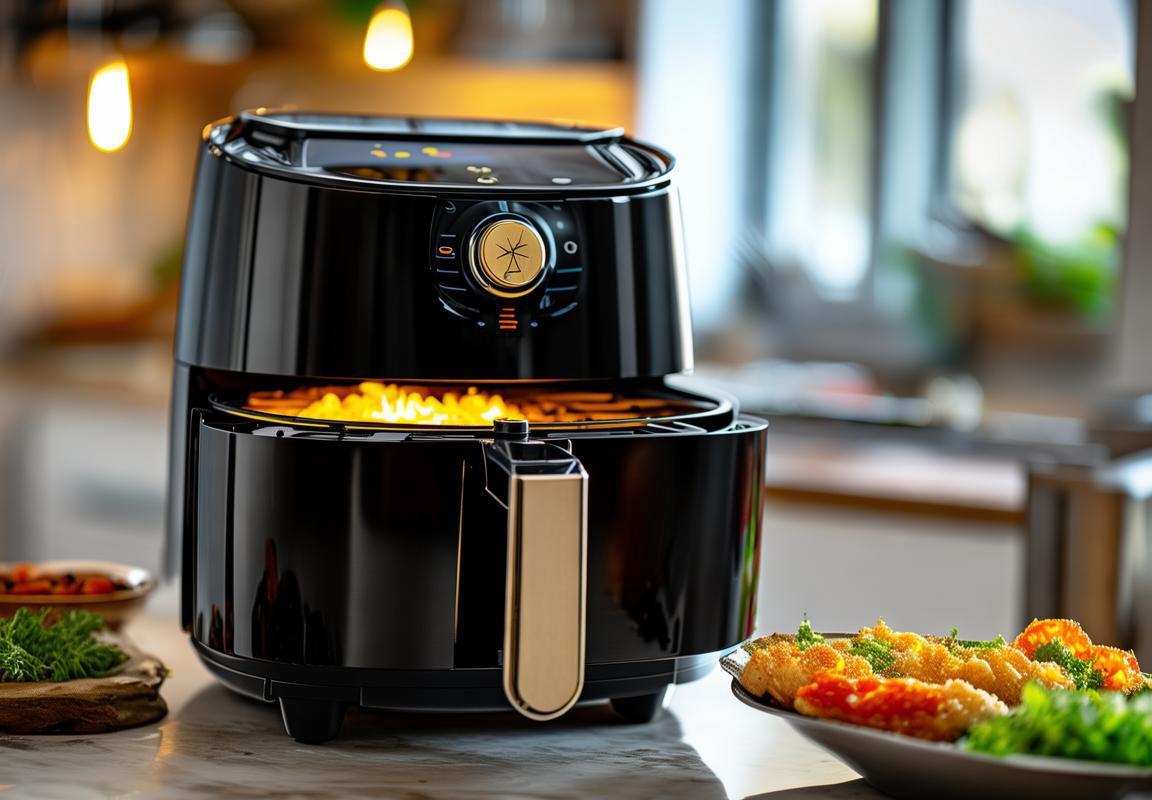
The CE Certified Air Fryer OEM Landscape
In the world of kitchen appliances, the air fryer has emerged as a game-changer, particularly in the Western market. This surge in popularity has led to a robust landscape of Original Equipment Manufacturers (OEMs) specializing in CE certified air fryers. Let’s delve into the various facets of this dynamic sector.
The market for air fryers has seen a remarkable growth trajectory, driven by health-conscious consumers seeking a healthier alternative to traditional frying methods. This demand has sparked a proliferation of OEMs that cater to this niche, each vying for a piece of the lucrative pie.
These OEMs come in various shapes and sizes, from small, family-owned businesses to large corporations with global reach. They range from those focusing on innovative designs to those specializing in mass production, ensuring that there’s an air fryer to suit every consumer’s needs and budget.
One of the key aspects that differentiate CE certified air fryer OEMs is their commitment to quality and safety. The CE mark, which stands for Conformité Européenne, is a symbol of compliance with European health, safety, and environmental standards. This certification is not just a badge of honor; it’s a testament to the rigorous testing and quality control processes that these manufacturers undergo.
The certification process itself is quite stringent. It involves thorough evaluation of the product’s technical documentation, design, manufacturing processes, and safety features. This ensures that every CE certified air fryer on the market meets the highest standards, giving consumers peace of mind.
Innovation is another hallmark of the CE certified air fryer OEM landscape. These manufacturers are constantly pushing the boundaries, introducing features like programmable settings, smart technology integration, and eco-friendly materials. This not only enhances the user experience but also positions these OEMs as leaders in the industry.
The competition among OEMs is fierce, with each striving to offer unique selling points. Some focus on energy efficiency, others on compact designs, and still others on versatility. This diversity is a boon for consumers, as it allows them to choose an air fryer that aligns with their specific lifestyle and preferences.
The supply chain is also a critical component of the CE certified air fryer OEM landscape. These manufacturers often rely on a network of suppliers for components like heating elements, fans, and electronic controls. Ensuring that these suppliers meet the same high standards as the OEMs themselves is essential for maintaining product quality.
As the market continues to expand, so does the need for OEMs to adapt. Many are turning to sustainable practices, not only to reduce their environmental footprint but also to appeal to the growing number of eco-conscious consumers. This shift towards sustainability is reflected in the materials used, the manufacturing processes, and even the packaging.
Another trend in the CE certified air fryer OEM landscape is the emphasis on user experience. OEMs are investing in user-friendly interfaces, intuitive controls, and clear, informative user manuals. This focus on the customer experience is crucial in a market where consumer satisfaction is the ultimate goal.
The distribution channels for CE certified air fryers are equally diverse. From online marketplaces to brick-and-mortar stores, OEMs are leveraging multiple avenues to reach their target audience. This multi-channel approach allows them to tap into different consumer segments and increase their market share.
In conclusion, the landscape of CE certified air fryer OEMs is a complex and dynamic one. It’s characterized by a relentless pursuit of quality, innovation, and customer satisfaction. As the demand for air fryers continues to rise, these OEMs are well-positioned to meet the evolving needs of consumers across the Western market.
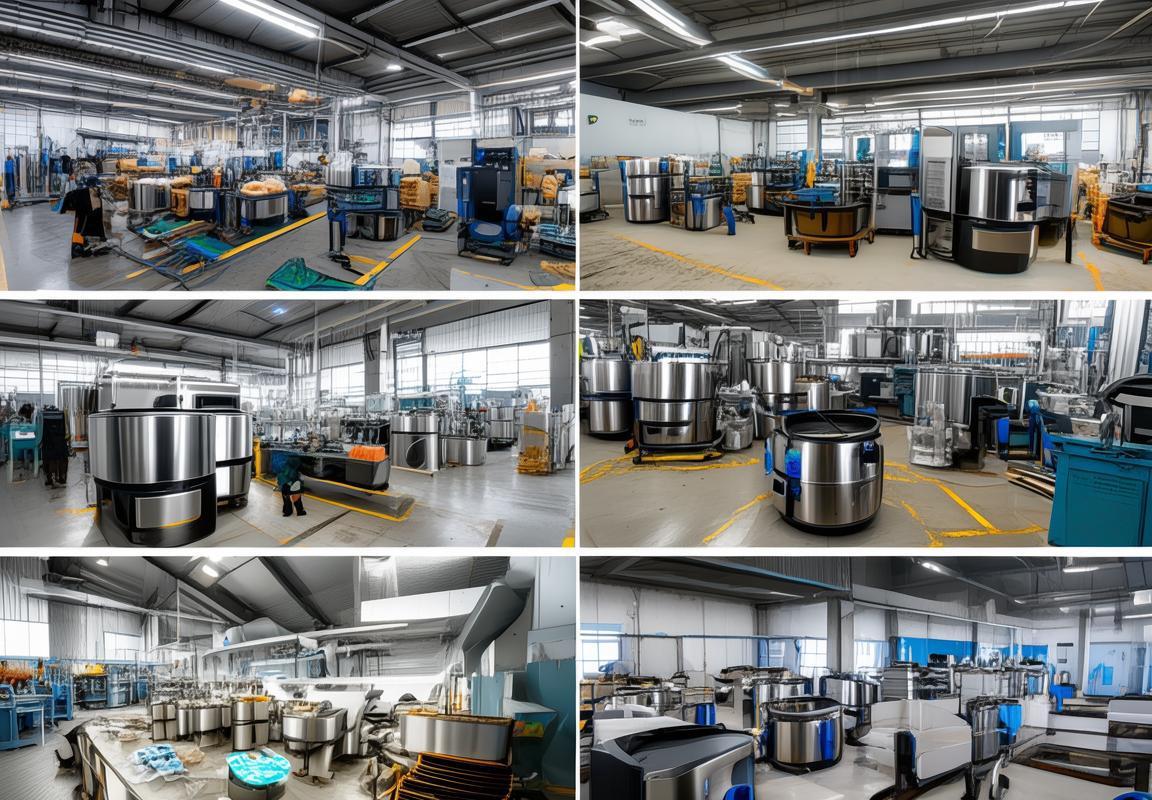
Benefits of Choosing CE Certified Air Fryer OEMs
In the bustling world of kitchen appliances, the rise of air fryers has been nothing short of revolutionary. Among the myriad of options available, opting for a CE certified air fryer OEM offers a host of tangible benefits that can make a significant difference in both consumer satisfaction and business success.
Endorsed by European StandardsA CE certified air fryer has been rigorously tested to meet the stringent safety, health, and environmental protection standards set by the European Union. This stamp of approval means that the product has been vetted by experts, ensuring that it’s not only safe for consumers but also environmentally responsible.
Enhanced Product QualityWhen you choose a CE certified air fryer OEM, you’re selecting a product that has undergone a meticulous quality control process. These manufacturers adhere to high-quality standards, which translates to a longer-lasting, more reliable appliance that performs consistently.
Global Market AccessThe CE mark is recognized across the European Union and several other countries, including Turkey, Iceland, Liechtenstein, and Norway. By choosing a CE certified air fryer OEM, you gain access to a broader market, allowing your products to reach a wider audience without the need for additional certifications.
Consumer Trust and CredibilityThe CE certification is a powerful symbol of quality and safety. Consumers are more likely to trust and purchase products that bear this mark. This trust can be a deciding factor for buyers who are looking for a reliable air fryer that won’t let them down.
Regulatory ComplianceNavigating the complex web of international regulations can be daunting. A CE certified air fryer OEM takes care of this for you. They ensure that all necessary regulations are met, reducing the risk of fines or legal issues that could arise from non-compliance.
Cost-Effective ManufacturingWhile the initial investment in CE certification may seem significant, it can actually lead to cost savings in the long run. By streamlining the production process and avoiding the need for multiple certifications, manufacturers can reduce overhead and pass those savings on to the consumer.
Customization and InnovationCE certified air fryer OEMs often offer a range of customization options, allowing businesses to tailor their products to specific market needs. This flexibility can lead to innovative designs and features that set your product apart from the competition.
Market DifferentiationIn a crowded market, having a CE certified air fryer can be a unique selling point. It differentiates your product from others and can be a key factor in your marketing strategy, highlighting the commitment to quality and safety.
Long-Term Customer RelationshipsBy offering a CE certified air fryer, you’re not just selling a product; you’re building a relationship with your customers. A reliable and safe appliance can lead to repeat purchases and a loyal customer base.
Access to Advanced TechnologyCE certified air fryer OEMs often have access to the latest technology and innovation. This means that your product will be at the forefront of the market, offering cutting-edge features that can attract tech-savvy consumers.
International Trade FacilitationThe CE mark simplifies international trade. By having a CE certified air fryer, you can more easily enter into agreements with international partners, knowing that your product meets the necessary standards for export.
In conclusion, choosing a CE certified air fryer OEM brings a multitude of benefits, from compliance with international standards to increased consumer trust and market differentiation. It’s an investment in quality, innovation, and long-term business success.
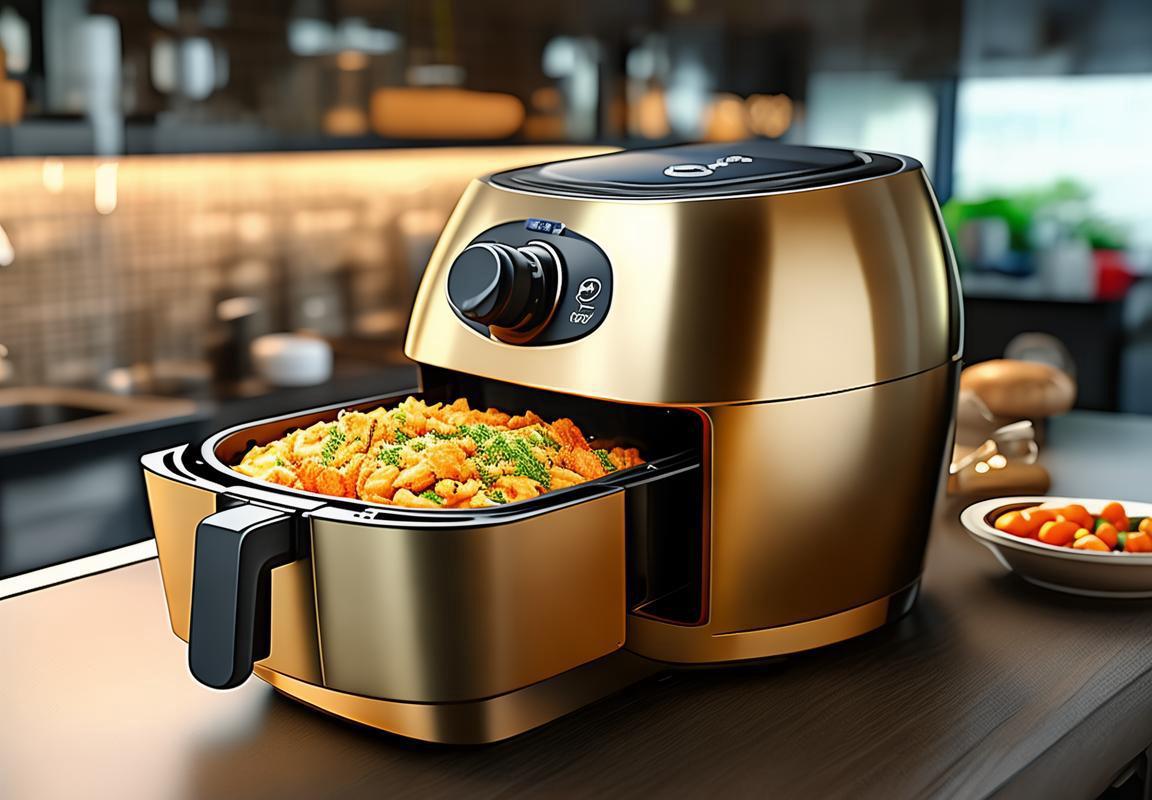
Market Trends and Consumer Preferences
The air fryer market has seen a remarkable surge in popularity, with consumers increasingly seeking healthier alternatives to traditional cooking methods. This shift is influenced by several market trends and consumer preferences that are reshaping the landscape.
Consumers are gravitating towards convenience, and air fryers have emerged as a game-changer in the kitchen appliances sector. The ease of use and quick cooking times have made these devices a staple in many homes.
Health-conscious consumers are driving the demand for air fryers. These appliances allow for the preparation of crispy and delicious food with significantly less oil than traditional frying methods, appealing to those looking to maintain a balanced diet.
Smart technology integration is another key trend. Modern air fryers often come equipped with features like timers, temperature control, and even WiFi connectivity, allowing users to monitor and adjust their cooking process remotely.
The rise of social media and influencer marketing has also played a role in shaping consumer preferences. Influencers showcase their air fryer recipes and cooking tips, creating a buzz around the product and influencing purchasing decisions.
There’s a growing trend towards eco-friendly and sustainable products. Consumers are increasingly looking for appliances that not only perform well but also have a minimal environmental footprint, and air fryers, being energy-efficient, align with these values.
Customization and personalization are becoming more important. Many consumers are looking for appliances that can cater to their specific needs, whether that’s a larger capacity model for families or a compact one for smaller living spaces.
The market is also seeing a rise in organic and natural ingredients, with consumers seeking air fryer recipes that incorporate these healthier options, leading to a demand for air fryers that can handle a wider variety of cooking styles.
The preference for versatility is evident as air fryers are being used not just for cooking but also for baking and even for defrosting certain foods. Consumers are drawn to appliances that can handle multiple tasks, making them a more attractive investment.
The trend towards healthier fast food alternatives is on the rise, with consumers looking for air fryers that can replicate the taste of fried foods without the guilt. This has led to the development of air fryer recipes that mimic popular fast-food items.
There’s a noticeable shift towards buying local and supporting small businesses. Consumers are more likely to purchase air fryers from brands that have a local presence or are part of a community, feeling a sense of connection and support.
The demand for smart and connected kitchen appliances is increasing. Consumers are looking for air fryers that can be controlled via smartphone apps, offering them the ability to cook their favorite meals from anywhere at any time.
Lastly, the focus on ease of cleaning is a significant factor. Air fryers with non-stick surfaces and removable parts are more appealing to consumers who value time-saving features and want to minimize the cleaning effort after cooking.
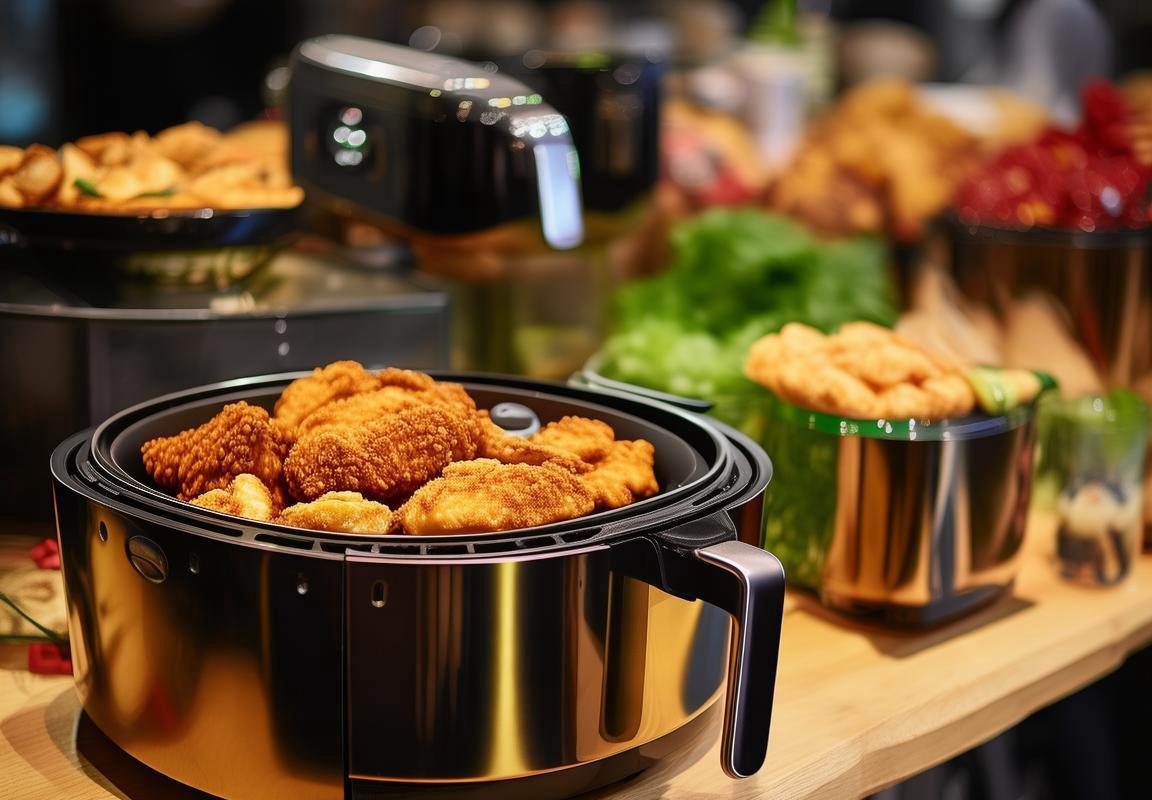
The Role of Technology in Air Fryer OEMs
In recent years, the air fryer market has seen a surge in innovation and technological advancements. These developments are not just limited to the end products, but also extend to the processes and methods used by Original Equipment Manufacturers (OEMs) in the production of air fryers. Here’s how technology is shaping the role of OEMs in the air fryer industry.
The Integration of Smart SensorsModern air fryers are equipped with smart sensors that monitor temperature and humidity levels, ensuring consistent cooking results. OEMs are leveraging these sensors to create air fryers that not only cook food more efficiently but also provide a safer and more controlled cooking environment.
Automated Production LinesOEMs are investing in automated production lines that streamline the manufacturing process. These lines reduce human error, increase productivity, and enable OEMs to produce a larger volume of air fryers in less time. The use of robotics and advanced machinery has become a standard in the industry.
Energy-Efficient TechnologiesEnergy consumption is a significant concern for consumers and OEMs alike. As a result, technology is being used to develop air fryers that are more energy-efficient, reducing both operating costs and the carbon footprint. This includes improvements in heating elements and insulation, which can lead to significant energy savings.
Customizable Cooking ProgramsTechnology has allowed OEMs to include customizable cooking programs in air fryers. Users can now program their appliances to meet specific cooking requirements, such as temperature and cooking time, for a wide variety of foods. This level of personalization is a direct response to consumer demand for versatility and convenience.
Enhanced Safety FeaturesSafety is a top priority in the air fryer market. OEMs are incorporating advanced safety features such as automatic shut-offs, child locks, and overheat protection. These features are not only designed to prevent accidents but also to give consumers peace of mind.
Wireless Connectivity and Mobile AppsThe integration of wireless connectivity and mobile apps has transformed the air fryer market. Consumers can now control their air fryers remotely, receive cooking alerts, and access a wealth of recipes through their smartphones or tablets. This level of connectivity is made possible by technology that allows for seamless integration between the appliance and the user’s device.
Health and Wellness IntegrationWith a growing focus on health and wellness, OEMs are integrating features that cater to these trends. This includes air fryers with adjustable oil usage, which can help reduce the fat content of cooked foods, and models that offer healthier cooking options, such as air frying at lower temperatures.
Real-Time Monitoring and Data AnalyticsOEMs are utilizing real-time monitoring and data analytics to improve their products and manufacturing processes. By collecting data on how customers use their air fryers, manufacturers can gain insights into consumer behavior and preferences, leading to better product development.
Sustainability InitiativesTechnology is also being used to address sustainability concerns. OEMs are exploring eco-friendly materials and manufacturing processes that minimize waste and reduce the environmental impact of air fryer production.
Customization and PersonalizationThe ability to customize and personalize air fryers is becoming increasingly important. OEMs are offering a variety of models with different features, allowing consumers to choose the perfect air fryer for their specific needs and preferences.
In conclusion, technology is playing a pivotal role in shaping the air fryer OEM landscape. From smart sensors and automated production lines to energy-efficient technologies and enhanced safety features, the integration of technology is what drives innovation and keeps the air fryer market competitive and dynamic. As technology continues to evolve, so too will the capabilities and offerings of air fryer OEMs, ensuring that consumers have access to the latest and greatest in kitchen appliances.
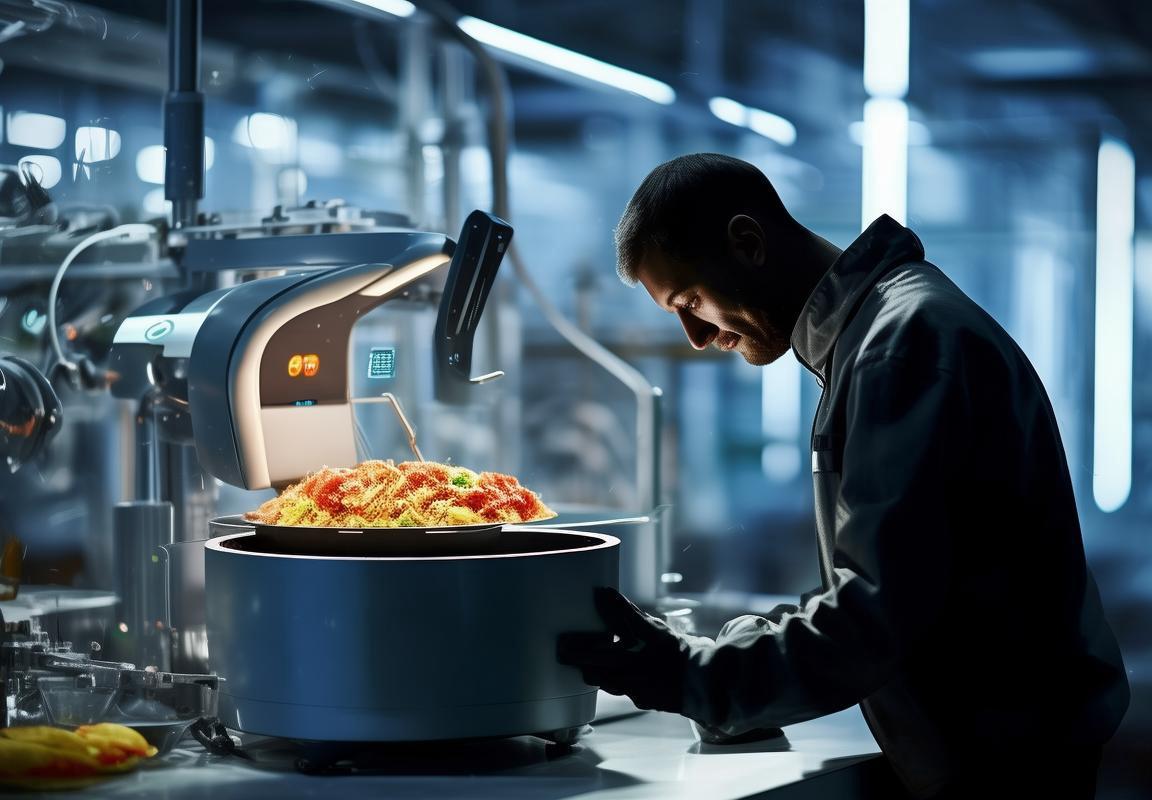
Navigating the Regulatory Landscape
Understanding the complexities of the regulatory landscape is akin to deciphering a maze for businesses, especially for those in the air fryer Original Equipment Manufacturers (OEM) sector. Regulations are not just about compliance; they are about ensuring safety, quality, and consumer trust. Here’s a detailed look at some key aspects of navigating this landscape:
The Complexity of International Regulations- Each country has its own set of rules and standards, making it challenging for OEMs to keep up with the myriad of regulations that can vary significantly from one market to another.
Safety Standards and Certifications- Safety is paramount in the appliance industry, and OEMs must adhere to stringent safety standards. CE certification, for example, is a key requirement in the European Union, ensuring that products meet the necessary safety, health, and environmental protection requirements.
Environmental Regulations- With the growing emphasis on sustainability, OEMs must navigate regulations regarding energy efficiency, emissions, and the use of environmentally friendly materials. This includes compliance with directives like the Energy-related Products (ErP) directive in the EU.
Product Liability and Consumer Protection- The responsibility for product safety and quality falls on the OEMs. Regulations like the Consumer Product Safety Improvement Act (CPSIA) in the U.S. require manufacturers to prove that their products are safe for consumers, which involves rigorous testing and documentation.
Customs and Import/Export Laws- Navigating the complexities of international trade is another critical aspect. OEMs must understand customs duties, import/export restrictions, and compliance with international trade agreements to avoid delays and penalties.
The Impact of Globalization on Regulations- As markets become more interconnected, regulations are subject to change more frequently. OEMs must stay informed about global trends and anticipate shifts in regulatory frameworks that could affect their operations.
Adapting to Changing Consumer Expectations- Consumer awareness of product safety and quality has increased, and OEMs must adapt to these expectations. This often means investing in new technologies and processes to meet higher standards.
Collaboration with Regulatory Experts- Many OEMs turn to regulatory experts and consultants to help them navigate the landscape. These professionals provide guidance on compliance, conduct risk assessments, and help develop strategies for meeting regulatory requirements.
The Role of Industry Associations- Joining industry associations can be a valuable resource for OEMs. These organizations often provide updates on regulatory changes, offer networking opportunities, and sometimes advocate for industry-specific regulations.
Technology as a Compliance Tool- Advanced technologies, such as IoT (Internet of Things) and AI (Artificial Intelligence), are being used to ensure compliance. These technologies can track and manage product data, facilitate reporting, and help in maintaining records for regulatory audits.
Regular Audits and Inspections- Regular audits and inspections are a part of maintaining compliance. OEMs must be prepared to undergo these assessments, which can include reviewing documentation, testing products, and ensuring that quality control processes are in place.
The Importance of Continuous Improvement- The regulatory landscape is dynamic, and OEMs must commit to continuous improvement. This involves staying informed about emerging regulations, investing in training for staff, and adopting new technologies that can streamline compliance processes.
In conclusion, navigating the regulatory landscape is a multifaceted challenge that requires a deep understanding of international laws, a commitment to safety and quality, and the willingness to adapt to changing circumstances. For air fryer OEMs, this means staying ahead of the curve, investing in compliance, and ensuring that every product that leaves the factory meets the highest standards of safety and quality.

Case Studies: Successful CE Certified Air Fryer OEMs
In the world of air fryer Original Equipment Manufacturers (OEMs), a few companies have stood out with their CE certified products, showcasing a blend of innovation, quality, and compliance. Here are some notable case studies of successful CE certified air fryer OEMs:
The Story of EcoFry: From Concept to Market LeaderEcoFry started as a small startup with a vision to create air fryers that were not only efficient but also environmentally friendly. Their commitment to sustainability and compliance with European standards quickly turned them into a market leader. By focusing on energy-efficient designs and obtaining CE certification, EcoFry was able to tap into the eco-conscious consumer market.
The Rise of TechGlow: Combining Tech and TasteTechGlow Air Fryers has made a name for itself by integrating advanced technology into their appliances. Their CE certified air fryers feature smart controls and a range of cooking programs that cater to different dietary needs. The company’s success lies in its ability to blend cutting-edge technology with user-friendly design, ensuring that each product is a hit with consumers.
The Journey of AirConnoisseur: Quality Over QuantityAirConnoisseur has always believed in the power of quality. Their air fryers are CE certified, which means they meet stringent safety and performance standards. By focusing on producing fewer units with exceptional craftsmanship, AirConnoisseur has built a loyal customer base. Their case study is a testament to the fact that sometimes, less can be more.
The Innovation of SmartAirFry: Smart Tech Meets Healthy CookingSmartAirFry has taken the air fryer industry by storm with its innovative approach to smart technology. Their CE certified air fryers are equipped with features like wireless connectivity and real-time cooking monitoring. This not only makes cooking easier but also ensures that the end result is perfectly cooked every time. The company’s growth is a direct result of its commitment to innovation and customer satisfaction.
The Global Expansion of EuroFry: From Local Hit to International PhenomenonEuroFry began as a local brand in Germany but has now become a global sensation. Their CE certified air fryers are known for their durability and performance. By adhering to European standards, EuroFry has been able to expand its market reach and establish partnerships with international retailers. Their case study highlights the importance of a strong brand and a commitment to quality.
The Legacy of HealthyHome: A Brand Built on TrustHealthyHome has been a staple in the air fryer market for years, thanks to its reputation for producing healthy and safe cooking appliances. Their CE certified air fryers have been a hit with consumers who are looking for a healthier alternative to traditional cooking methods. The brand’s success story is one of consistency and trust, as they have maintained high standards in both product development and compliance.
The Adaptability of GlobalCookAir: Meeting Diverse NeedsGlobalCookAir understands that the global market is diverse, and so are the needs of its consumers. Their CE certified air fryers come in various sizes and configurations to cater to different lifestyles. By focusing on adaptability and innovation, GlobalCookAir has become a go-to brand for both commercial and residential customers around the world.
The Path of EcoCookTech: Embracing a Greener FutureEcoCookTech has made a name for itself by being at the forefront of green technology in the air fryer industry. Their CE certified products are not only energy-efficient but also eco-friendly. By choosing EcoCookTech, customers are not just investing in a cooking appliance; they are investing in a greener future. The company’s case study is a shining example of how a brand can make a positive impact on the environment.
These case studies of successful CE certified air fryer OEMs illustrate the importance of combining quality, innovation, and compliance with European standards. Each brand has found its unique niche in the market, but they all share a common thread: a commitment to delivering products that not only meet but exceed consumer expectations.
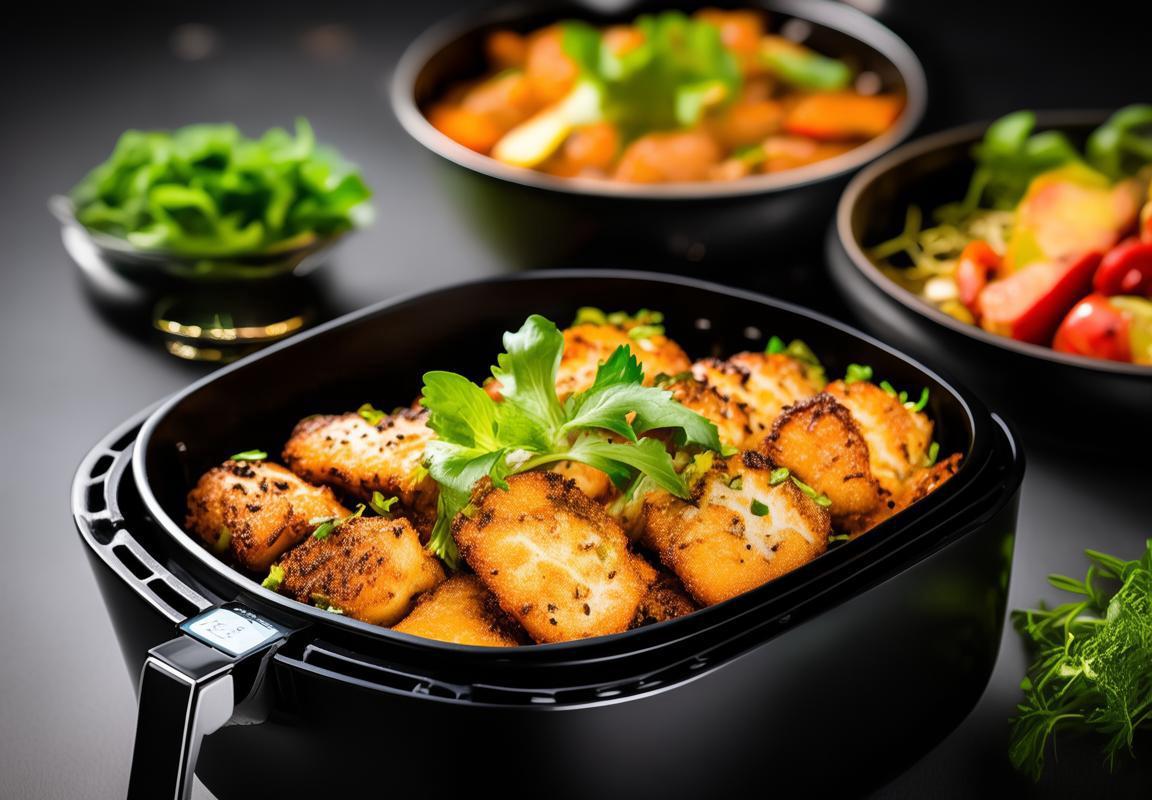
Future Outlook for CE Certified Air Fryer OEMs
The air fryer industry has seen a remarkable transformation over the years, with CE certified OEMs leading the charge. As we look ahead, the future of CE certified air fryer OEMs appears to be robust, driven by several key factors.
Innovation in Design and FunctionalityDesigns are becoming sleeker, with a focus on user-friendliness and efficiency. Smart features, such as Wi-Fi connectivity and app integration, are becoming standard, allowing users to monitor and control their air fryers remotely. The future will likely see even more advanced technology, such as voice-activated controls and predictive cooking times based on user habits.
Sustainability and Energy EfficiencyConsumers are increasingly conscious of environmental impact, and this trend is expected to influence the future of air fryer OEMs. We can anticipate a rise in eco-friendly materials and energy-efficient designs that not only reduce waste but also lower the cost of operation for consumers.
Global Market ExpansionCE certified air fryer OEMs are not limited to the European market. As these brands gain recognition, they are expanding into new regions, including Asia and North America. The global market is ripe for growth, with emerging markets showing a high demand for affordable yet high-quality kitchen appliances.
Regulatory Compliance and SafetyMaintaining CE certification is a continuous process that involves rigorous testing and adherence to strict safety standards. As the industry evolves, so will the regulations. OEMs that prioritize compliance will remain competitive, ensuring that their products meet the latest safety protocols and consumer expectations.
E-commerce and Direct-to-Consumer SalesThe rise of e-commerce has opened new avenues for air fryer OEMs to reach consumers directly. By cutting out the middleman, brands can offer competitive pricing and personalized customer service. The future will likely see a blend of traditional retail and online sales, with a focus on building strong brand loyalty through digital marketing and social media engagement.
Collaborations and PartnershipsTo stay ahead, CE certified air fryer OEMs are forming strategic partnerships with other industry players. These collaborations can range from joint product development to sharing manufacturing capabilities. By pooling resources and expertise, companies can innovate faster and adapt to market changes more effectively.
Customization and PersonalizationAs the market becomes more saturated, consumers are seeking products that cater to their specific needs. Customizable features, such as adjustable temperature settings and various cooking modes, are becoming more popular. The future will see a trend towards personalized air fryers, where users can tailor their appliances to their preferred cooking styles.
Health and Wellness FocusWith the growing health and wellness movement, air fryers are seen as a healthier alternative to traditional deep-frying methods. This focus on health is expected to drive the future of air fryer OEMs, with innovations that reduce oil usage while still delivering delicious, crispy results.
Educational Content and Cooking DemonstrationsTo help consumers make informed purchasing decisions, air fryer OEMs are investing in educational content. This includes cooking demonstrations, recipe guides, and how-to videos that showcase the versatility and convenience of their products. As the market evolves, we can expect to see more interactive and engaging content that educates and inspires users.
Investment in Research and DevelopmentThe future of CE certified air fryer OEMs hinges on continuous innovation. Companies that invest heavily in R&D are more likely to introduce groundbreaking features and technologies that differentiate their products from competitors. This focus on innovation is crucial for long-term success in a rapidly evolving market.
As the air fryer market continues to grow, CE certified OEMs are poised to lead the way with their commitment to quality, innovation, and consumer satisfaction. The future holds a world of possibilities, where air fryers become even more integrated into everyday cooking, making healthy, delicious meals accessible to everyone.